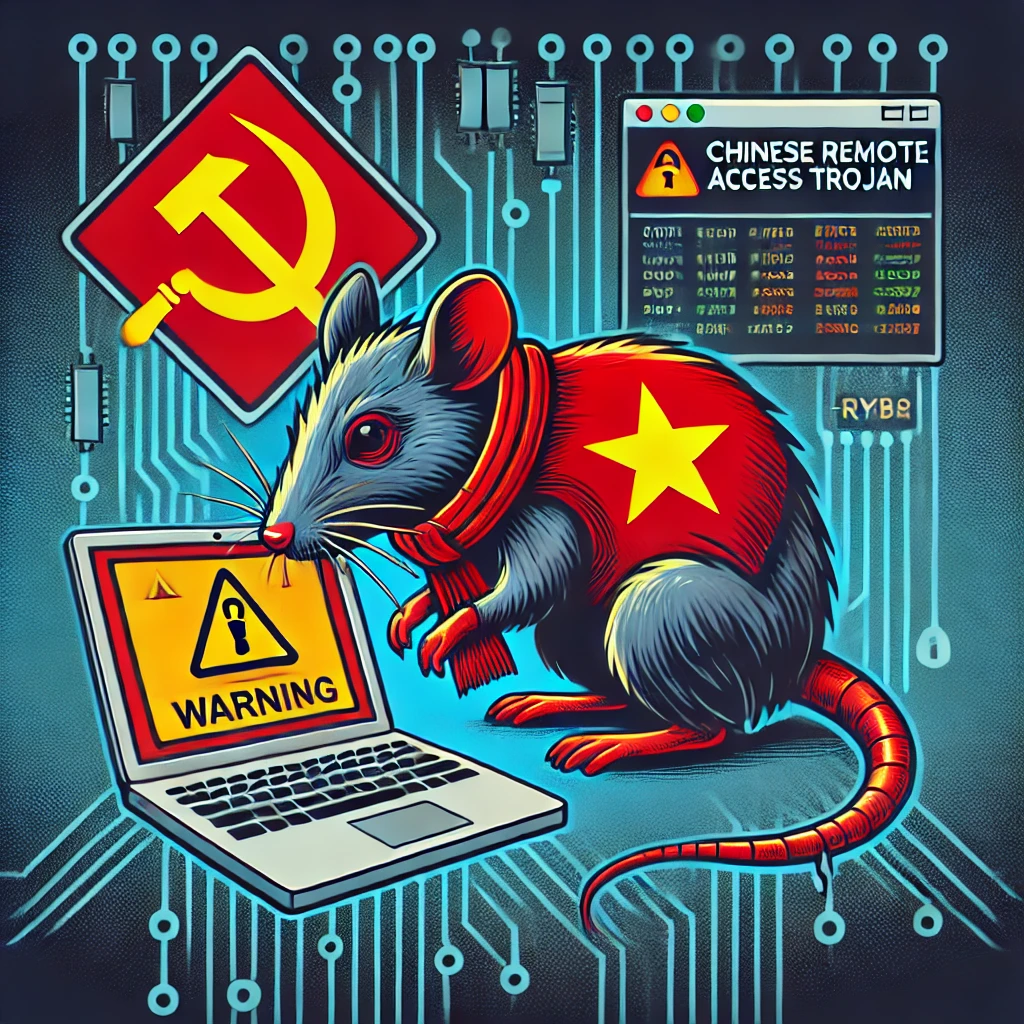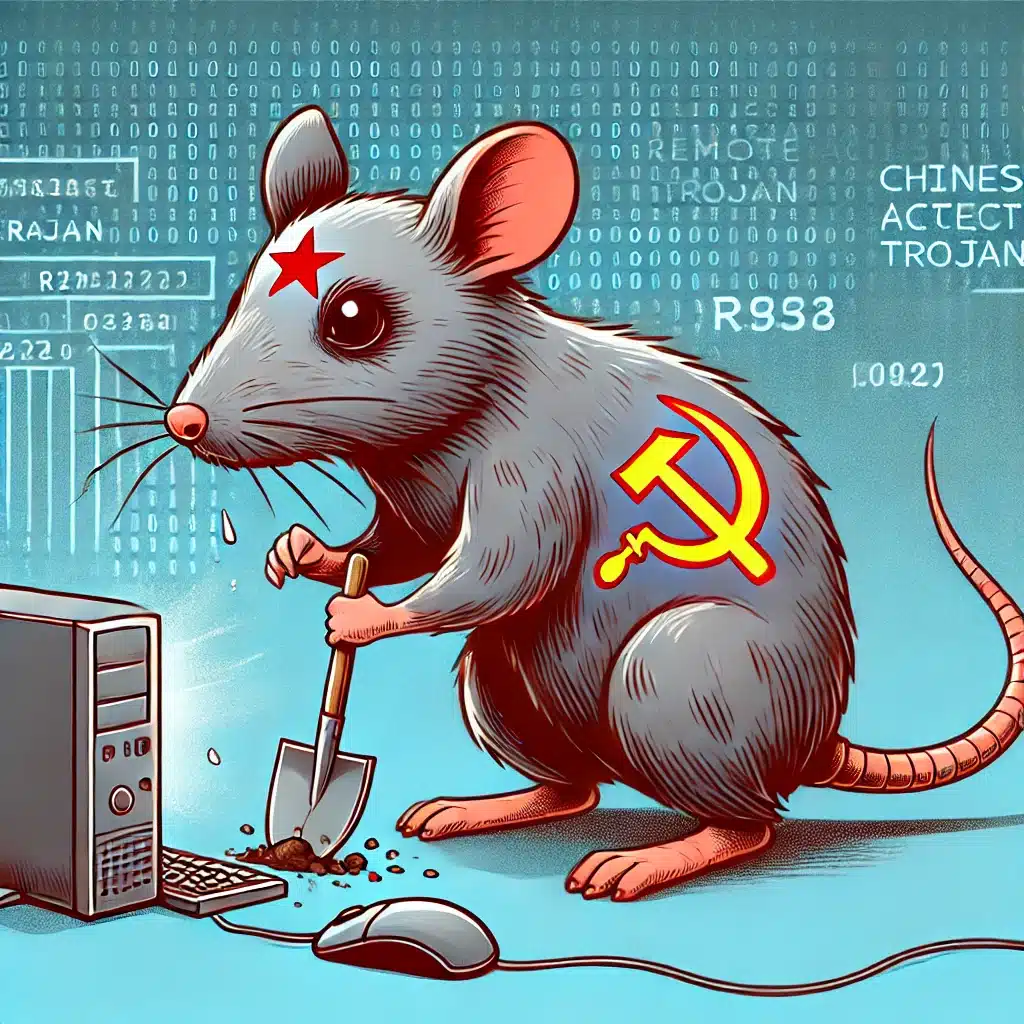In recent months, the cybersecurity landscape has witnessed a significant escalation in threats as Chinese state-sponsored hacking groups intensify their cyber-espionage efforts. Utilizing advanced cyber tools such as SpiceRAT and SugarGh0st, these groups have been adeptly infiltrating a wide range of enterprise networks around the globe. This surge in cyber activities is not merely a routine uptick in digital espionage but a calculated enhancement of China’s strategic cyber capabilities, targeting critical infrastructure, key corporate data, and intellectual property across multiple sectors.
The deployment of SpiceRAT and SugarGh0st by these APT (Advanced Persistent Threat) groups marks a concerning advancement in their operational tactics, reflecting a deeper, more sophisticated grasp of cyber warfare. These tools are engineered to stealthily breach security perimeters, establish long-term presence within host networks, and conduct extensive data extraction without triggering conventional security alarms. The strategic selection of these specific tools underscores a shift towards more aggressive, persistent, and covert operations aimed at securing long-term espionage capabilities.
This article aims to delve into the technical intricacies of SpiceRAT and SugarGh0st, illustrating not only their potential for damage but also the broader implications of their use on global cyber security dynamics. For Corporate IT leaders—particularly CISOs, CIOs, and IT Directors—the understanding of these tools, their deployment methodologies, and the nature of the threats they pose is crucial. Such knowledge is pivotal in fortifying defenses, crafting informed cybersecurity strategies, and safeguarding critical organizational assets against a backdrop of increasingly sophisticated cyber threats.
SpiceRAT: An In-Depth Technical Analysis

SpiceRAT is a sophisticated Remote Access Trojan (RAT) utilized by Chinese state-sponsored actors for extensive espionage operations. This malware is tailored to bypass standard security measures, maintain a low profile, and exfiltrate data without detection, posing a significant threat to global enterprise networks. Some of its features and technical capabilities include:
- Advanced Command and Control (C2) Mechanisms:SpiceRAT utilizes encrypted C2 channels to ensure secure and covert communications with its operators. These channels often utilize TLS encryption over standard HTTP(S) ports, which makes the traffic blend in with legitimate network activities. The C2 infrastructure is decentralized using multiple domains and IP addresses to avoid a single point of failure and detection.
- Registry Manipulation: SpiceRAT adds or modifies registry entries to ensure it is executed at every system startup. Common registry keys targeted include `HKCUSoftwareMicrosoftWindowsCurrentVersionRun` and `HKLMSoftwareMicrosoftWindowsCurrentVersionRunServices`.
- Process Injection: It injects malicious code into legitimate system processes such as `svchost.exe` or `explorer.exe`, thereby gaining the ability to execute its operations under the guise of valid system activities, making detection significantly more challengin
SpiceRAT can capture keystrokes, take screenshots, and exfiltrate files. It filters collected data to reduce bandwidth usage and avoid detection. The exfiltration processes are often timed to coincide with normal network traffic peaks to further avoid raising alerts.
Technical Innovations:
- Dynamic Configuration: The malware can receive and update its configuration in real-time from the C2 server, allowing operators to adapt tactics based on the ongoing defense measures at the target network.
- Custom Encryption Algorithms: For critical communications and data storage, SpiceRAT employs custom encryption algorithms that are not commonly used, making decryption without the specific keys nearly impossible for the analysts.
Indicators of Compromise (IoCs):
- Suspicious C2 traffic on typical HTTP(S) ports that contain irregular, non-standard headers or payloads encrypted beyond typical SSL/TLS encryption.
- Frequent connections to newly registered domains or domains with poor reputations as identified by threat intelligence platforms.
- Presence of unknown files in system directories such as `C:Windows` or `C:WindowsSystem32` that mimic the names of legitimate files but with slight variations.
- Unexpected changes in file sizes or system files that have new or modified execution properties.
- Unauthorized creation or modification of auto-start registry keys often linked to the persistence of malware on infected hosts.
Detection and Countermeasures:
Detection of SpiceRAT involves a combination of network traffic analysis, endpoint monitoring, and behavioral detection techniques:
- Endpoint Detection and Response (EDR) Systems: Implement EDR solutions that monitor and analyze behaviors of processes, including those injected into legitimate system processes.
- Anomaly Detection: Use advanced anomaly detection tools that can identify deviations from typical network traffic patterns and endpoint behaviors.
- Forensic Analysis: Regular forensic audits can help in identifying remnants of SpiceRAT activities, including unusual registry entries, file residues, and network traffic logs.
Mitigating the threat of SpiceRAT involves not only detecting the malware but also understanding its behavior and blocking its operations:
- Regularly Update Security Patches: Keep all systems and software up-to-date to minimize vulnerabilities that could be exploited by SpiceRAT.
- Enhanced User Training: Educate users on the risks of phishing and the importance of avoiding unknown or suspicious links and email attachments.
SugarGh0st: A Closer Look
SugarGh0st represents a sophisticated evolution in the landscape of Remote Access Trojans (RATs), engineered by Chinese state-sponsored cyber actors. This malware is designed with advanced stealth capabilities and flexibility, making it a formidable tool for conducting espionage, data exfiltration, and maintaining long-term access to targeted systems without detection.

Some of its features and capabilities include:
- Multi-Stage Infection Process: SugarGh0st employs a multi-stage infection strategy to evade initial detection and enhance its persistence within the host system. The initial delivery often occurs through spear-phishing emails or compromised websites, delivering a benign-looking payload that bypasses basic antivirus detection. Once executed, this initial loader fetches additional payloads from a remote server, which includes the main RAT functionalities. Each stage is carefully crafted to perform specific tasks while minimizing the malware’s footprint until full activation.
- Advanced Evasion Techniques: SugarGh0st uses polymorphic algorithms to constantly alter its code on each infection, effectively evading signature-based detection systems. Coupled with robust encryption protocols for its communication and data storage, it becomes exceedingly difficult for traditional security tools to detect or analyze the threat. Integrating rootkit components allows SugarGh0st to hide its presence more effectively by intercepting and manipulating low-level system processes. This includes hiding files, processes, and registry keys, which helps in maintaining persistence and evading security measures designed to detect unauthorized changes.
- Behavioral Camouflage: SugarGh0st is designed to mimic legitimate network traffic and user behaviors to avoid raising suspicion. It carefully schedules its data exfiltration during high network traffic periods and uses common network protocols to blend its malicious traffic with legitimate activities. Additionally, it can temporarily halt malicious activities if it detects active security scans or network monitoring, resuming only when it deems the environment safe.
The modular design of SugarGh0st allows for the dynamic loading of additional functionalities tailored to the specific environment or targets. This includes custom modules for keylogging, screen capturing, or even lateral movement tools that can be deployed without altering the core components of the malware. To further complicate detection efforts, SugarGh0st can deploy decoy documents or applications that appear benign or useful to the user. These decoys can distract users and security systems from the actual malicious activities being carried out in the background.
Indicators of Compromise (IoCs):
- Detection of anomalous encrypted traffic patterns that deviate from typical user behavior, especially during off-peak hours.
- Unusual outbound connections to IP addresses or domains known to be associated with C2 servers or malware distribution.
- Unexplained system instability or performance issues, which may indicate the presence of rootkit activities or other unauthorized modifications by SugarGh0st.
- Suspicious changes in system files or settings that do not correlate with known software updates or legitimate system modifications.
Detection and Countermeasures:
Detecting SugarGh0st requires a blend of advanced threat detection techniques and rigorous system monitoring:
- Behavioral Analysis Systems: Deploy advanced behavioral analysis tools that can detect anomalies in system and network operations, looking beyond traditional signature-based detection methods.
- Endpoint Protection Solutions: Use comprehensive endpoint protection platforms (EPP) that integrate antivirus, anti-malware, and EDR capabilities to provide a holistic defense against multifaceted threats like SugarGh0st.
Mitigation Strategies:
Effective mitigation against SugarGh0st involves proactive security practices and responsive countermeasures:
- Enhanced Network Segmentation: Implement strict network segmentation policies to limit the lateral movement of the malware and confine potential damage.
- Continuous Security Training: Conduct regular security training sessions to educate users on the latest phishing tactics and encourage safe computing practices.
Detailed Deployment Methodologies
The deployment methodologies utilized by advanced tools like SpiceRAT and SugarGh0st are meticulously crafted to maximize reach and effectiveness while minimizing detection. These Remote Access Trojans (RATs) are primarily deployed through sophisticated vectors such as targeted phishing campaigns, strategic watering hole attacks, and the exploitation of zero-day vulnerabilities, each chosen for their potential to infiltrate high-value targets.
Targeted Phishing Campaigns:
Phishing remains one of the most effective initial attack vectors for deploying these RATs. Attackers conduct detailed reconnaissance to gather information about potential targets, including their professional contacts, the language they use, and their day-to-day activities. This information is then used to craft convincing phishing emails that contain malicious attachments or embedded links. These emails may mimic legitimate communications from trusted sources, such as internal company memos, updates from software vendors, or links to seemingly benign websites. Once the recipient clicks on the link or opens the attachment, the RAT is deployed silently onto their system. The sophistication of these phishing attempts makes them highly effective, as they often bypass traditional email filters and user suspicions.
Watering Hole Attacks:
In watering hole attacks, attackers identify and compromise websites that are known to be frequented by employees of the target organization. These websites are then laced with malicious code. When an employee visits the compromised website, the malicious code exploits vulnerabilities in the browser or the operating system to install the RAT without the user’s knowledge. This method is particularly insidious as it exploits the trust users have in regularly visited sites, turning routine actions into opportunities for malware infiltration.
Exploitation of Zero-Day Vulnerabilities:
SpiceRAT and SugarGh0st are also deployed via zero-day vulnerabilities, which are flaws in software that are unknown to the software maker and for which no patch has yet been issued. These vulnerabilities represent highly valuable tools for attackers as they allow for the bypassing of most traditional security measures. By exploiting these vulnerabilities, attackers can deploy RATs directly onto a target’s system or use them as part of a multi-stage attack to gain deeper access to the network.
Post-Infiltration Activities:
Once the RATs have been successfully deployed, they begin to establish a secure foothold within the network. This involves multiple steps:
- Exploiting System Vulnerabilities: The RATs scan for and exploit known vulnerabilities within the system to gain elevated privileges. This might include exploiting weak system configurations, unpatched software, or reusing credentials found on the infected machine.
- Privilege Escalation: With elevated privileges, the RATs gain broader access to system resources, allowing them to manipulate system processes, access restricted areas, and create backdoors for persistent access.
- Lateral Movement: The RATs then begin moving laterally across the network, searching for additional systems to infect and increasing their control over important network resources. This movement is typically stealthy, utilizing legitimate network protocols and tools to blend in with normal network traffic.
Throughout their deployment and operation, SpiceRAT and SugarGh0st maintain a constant C2 communication with their operators. This connection is used to exfiltrate data, receive new instructions, and update the malware’s configuration as needed. The C2 communication is encrypted and carefully managed to avoid detection by network security systems, ensuring that the attackers retain control over the compromised systems and continue their malicious activities undetected.
Implications for Corporate IT Leaders
The emergence of sophisticated Remote Access Trojans (RATs) like SpiceRAT and SugarGh0st presents a significant challenge for Corporate IT leaders. These state-sponsored malware tools are designed not only to infiltrate networks but also to remain hidden while conducting espionage and exfiltrating sensitive data. This poses dire threats to the confidentiality, integrity, and availability of critical enterprise data.
Direct Impact on Organizational Security:
SpiceRAT and SugarGh0st can undermine operational integrity, expose intellectual property, and compromise confidential data, leading to potential reputational damage and competitive disadvantage. The ability of these RATs to manipulate and corrupt data can result in flawed business decisions, while their disruptive capabilities can severely impact critical business operations by disabling access to crucial systems.
Challenges in Detection and Mitigation:
Detecting and mitigating these sophisticated threats requires a nuanced approach. The stealth capabilities of these RATs, including their ability to mimic legitimate network traffic and hide their signatures, make them particularly elusive. The primary challenge for CISOs, CIOs, and IT Directors lies in not only detecting these threats but also in preventing their deployment and effectively mitigating their impact. This involves a complex mix of advanced technological solutions and skilled personnel to close backdoors and remove these threats from the network.
Strategic Response and The Role of Professional Incident Response Services:
Given the complexity and sophistication of attacks involving tools like SpiceRAT and SugarGh0st, Corporate IT leaders must employ a strategic, multi-layered security approach:
- Advanced Security Technologies: Implementing cutting-edge firewalls, IDS, and EDR systems capable of detecting and neutralizing advanced threats.
- Continuous Monitoring and Vigilance: Establishing 24/7 monitoring to detect any signs of intrusion or unusual activities as early as possible.
- Proactive Incident Response: Engaging with professional incident response firms such as Cyber Centaurs, which specialize in rapid identification, neutralization of threats, and strategic security planning. Cyber Centaurs provides expert analysis and forensics, 24/7 monitoring and response, and assists in developing robust security measures tailored to anticipate and counteract sophisticated cyber threats.
- Comprehensive Employee Training: Regular security awareness training to educate employees on recognizing phishing attempts and other social engineering tactics, which are often the initial vectors for such attacks.
Conclusion
As the threat landscape shaped by state-sponsored cyber activities becomes increasingly complex, Corporate IT leaders are called upon to elevate their security measures to protect their organizations. This article has discussed the intricate nature of advanced malware tools like SpiceRAT and SugarGh0st, highlighting their potential to infiltrate systems undetected and cause significant operational and informational damage.
In responding to these threats, it is essential for organizations to enhance their internal defenses through continuous improvement of security protocols and technologies. Regular updates, vigilant monitoring, and comprehensive employee training form the cornerstone of an effective defense strategy that adapts to evolving threats. Employees, often the first line of defense against cyber attacks, must be well-informed and vigilant, capable of recognizing and neutralizing threats before they compromise the system.
However, the sophistication of threats like SpiceRAT and SugarGh0st often exceeds the capacity of standard in-house security measures. In such cases, collaboration with specialized cybersecurity firms becomes invaluable. Firms like Cyber Centaurs offer the expertise and technology necessary to complement and enhance an organization’s existing security framework. They provide not only advanced detection and response capabilities but also strategic guidance that can significantly improve an organization’s overall cybersecurity posture.




